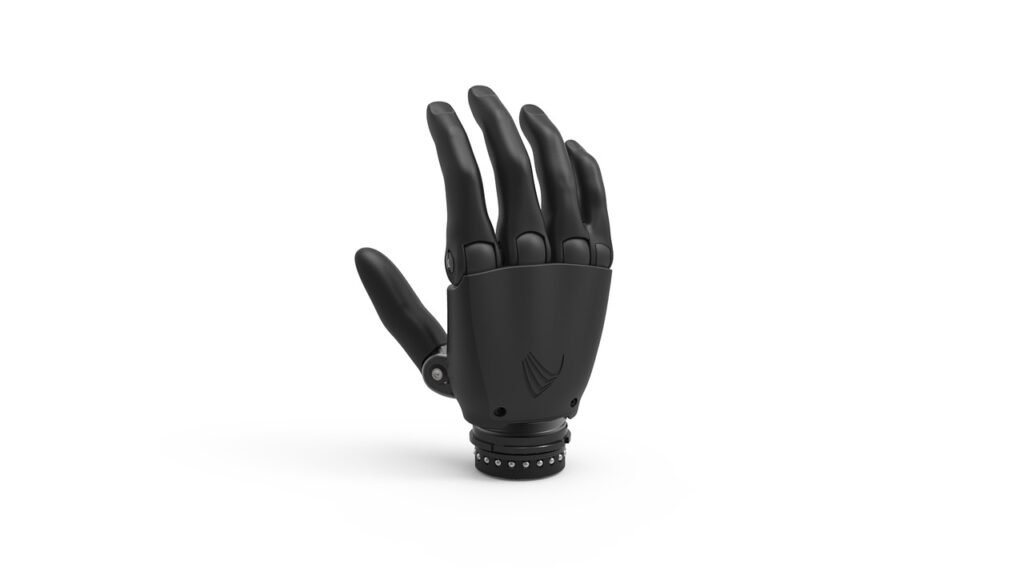Getting ready for a prosthetic hand is about more than just fitting the device. It is about preparing your body, your muscles, and your mind for the journey ahead. When someone chooses the Grippy Hand, they are not just receiving a tool—they are stepping into a new way of living, where independence and confidence return with every movement.
But to get the best out of Grippy, the body must be ready. Muscles need to be active, signals need to be strong, and the connection between brain and limb must be clear. This is where EMS, or Electronic Muscle Stimulation, becomes an important partner. EMS helps prepare the muscles so they are not weak or dormant when it’s time to start using the prosthetic.
In this article, we will explore why EMS matters so much before a Grippy Hand fitting, how it supports recovery, and what steps both users and clinics can take to ensure the journey is smoother, faster, and more successful.
Understanding EMS and Its Role in Prosthetic Preparation
What EMS Actually Does

EMS, or Electronic Muscle Stimulation, works by sending tiny electrical impulses into your muscles. These impulses make the muscles contract, almost like a workout without lifting weights. For someone preparing for a Grippy Hand, this is valuable because it keeps the muscles active and alive, even if they have not been used much since limb loss.
By preventing muscles from shrinking, EMS ensures that the body is ready to send signals when it is time to control the prosthetic. Instead of struggling with weak muscles, the user starts with a stronger foundation.
Why Muscle Readiness Matters for Grippy
The Grippy Hand responds to signals from your muscles. These signals travel through sensors in the prosthetic and tell it to open, close, or grip. If the muscles are too weak, the signals may be faint or inconsistent. This can make the prosthetic harder to control, especially in the early days.
With EMS, those muscles are trained in advance. They send clearer, stronger signals that the Grippy can easily pick up. This makes the first experience with the prosthetic smoother, and it reduces frustration for the user.
Keeping the Brain-Muscle Connection Alive
After an amputation, the brain still remembers how to move the missing part. But over time, if the muscles are not used, that connection can fade. EMS helps keep this pathway alive by regularly activating the muscles.
Every time a muscle contracts during EMS, the brain notices. It reinforces the memory of that movement, making it easier to send signals later. For users of the Grippy Hand, this means smoother learning and quicker adaptation.
Preparing the Body Before a Grippy Fitting
Starting Early with EMS
One of the biggest advantages of EMS is that it can be started even before the prosthetic fitting. While waiting for the Grippy Hand to be manufactured or adjusted, users can begin EMS therapy to strengthen their muscles.
This early preparation creates a strong base. By the time the Grippy is ready to be worn, the body is already trained to send signals. This makes the transition much less stressful and much more successful.
Preventing Stiffness and Weakness
When muscles are not used for a long time, they become stiff and weak. This can make it painful or difficult to use a prosthetic. EMS prevents this by keeping blood flowing and muscles moving. It reduces stiffness and preserves muscle tone, so the body feels more comfortable when the prosthetic is first worn.
For users preparing for Grippy, this is key. Instead of fighting against stiffness, they can focus on learning how to use the device effectively.
Supporting Socket Comfort
The comfort of a prosthetic often depends on the shape and tone of the residual limb. If the muscles shrink too much, the socket may not fit properly, causing discomfort or instability. EMS helps maintain muscle bulk, which supports a better socket fit.
This means fewer adjustments, less pain, and more hours of comfortable prosthetic use. By protecting limb health early, EMS sets users up for long-term success with Grippy.
Building Strength and Control for the Grippy Hand
Functional Strength vs General Strength
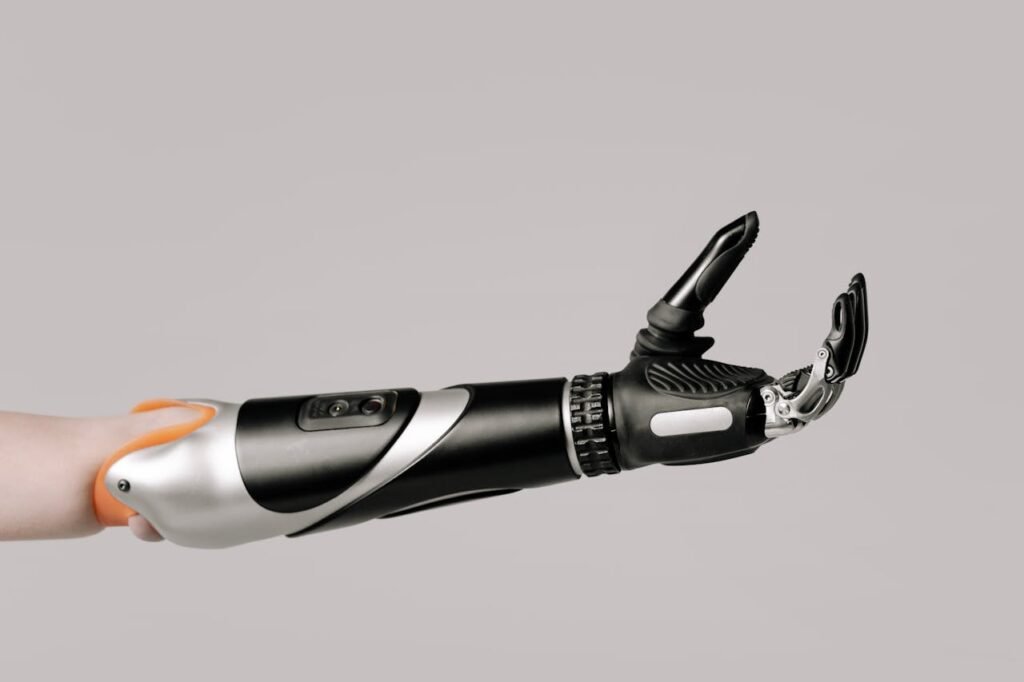
Strength for prosthetic use is different from regular gym strength. It is not about lifting heavy weights but about sending clear and consistent signals to the prosthetic. EMS builds this kind of functional strength by targeting the specific muscles needed for control.
With regular EMS sessions, the muscles become strong enough to deliver reliable signals. This translates into smoother and steadier movements when using Grippy.
Training for Grip Precision
The Grippy Hand is designed for practical daily tasks—holding utensils, typing on a keyboard, gripping a bottle. These actions require precise muscle activation. EMS helps refine this precision by training muscles to contract more accurately.
Over time, the user learns how to send signals that the prosthetic understands clearly. This improves fine control and reduces mistakes, such as dropping objects.
Building Endurance for Daily Life
Using a prosthetic all day can be tiring, especially in the early stages. Muscles that are not used to working for long periods may fatigue quickly. EMS helps build endurance by training muscles through repeated stimulation.
For Grippy users, this means being able to wear and use the prosthetic longer each day without discomfort. Tasks that once felt exhausting become easier and more natural over time.
Practical EMS Routines Before Using a Grippy Hand
Starting with Short Sessions
When beginning EMS therapy, less is often more. A short session of around 10 to 15 minutes is enough to activate the muscles without overwhelming them. The goal in the early stage is not to push hard but to build comfort with the stimulation. As the muscles adjust, the session time can be gradually increased.
This gentle introduction ensures that the user does not feel discouraged by soreness or fatigue. Instead, each session feels like a small step forward, encouraging consistency.
Combining EMS with Simple Movements
EMS works best when paired with voluntary movement. For example, while the device stimulates the forearm, the user can try opening or closing the hand. This teaches the brain to connect the muscle contraction with an action.
For someone preparing for Grippy, this combination is powerful. It not only strengthens the muscles but also helps the user begin practicing the same patterns they will use with the prosthetic.
Making EMS Part of Daily Routine
One of the greatest advantages of EMS is how flexible it is. It can be done while watching television, listening to music, or sitting at a desk. By making EMS part of daily life, users are more likely to stay consistent.
This consistency is what delivers real results. Small, daily sessions build lasting strength and prepare the muscles to respond effectively once the prosthetic is in use.
Clinical Strategies for EMS and Grippy Preparation
The Therapist’s Role in EMS Training
Therapists play an important role in guiding EMS therapy. They help identify which muscles need stimulation, how long sessions should last, and how to combine EMS with functional exercises. Their expertise ensures that progress is safe, structured, and tailored to each individual.
For someone preparing for a Grippy Hand, therapists can design programs that focus specifically on grip control, endurance, and socket comfort. This kind of personalized care makes a significant difference in outcomes.
Creating a Pre-Prosthetic Program
Clinics can offer EMS as part of a structured pre-prosthetic training program. Instead of waiting passively for the prosthetic fitting, users actively train their muscles. This keeps them engaged, motivated, and better prepared for the transition.
Such programs also give clinics a chance to monitor progress. Measuring improvements in strength and signal clarity reassures users that they are moving in the right direction, even before their Grippy arrives.
Extending EMS Beyond the Clinic
EMS is not just for clinical sessions. With proper guidance, users can continue therapy at home. Clinics can provide simple instructions or even devices that are safe for home use. This continuity helps users maintain momentum and prevents gaps in their rehabilitation.
By supporting patients both in the clinic and at home, therapists ensure that EMS becomes part of a lifestyle rather than a one-time activity.
The Emotional Benefits of EMS in Preparing for Grippy
Restoring Trust in the Body
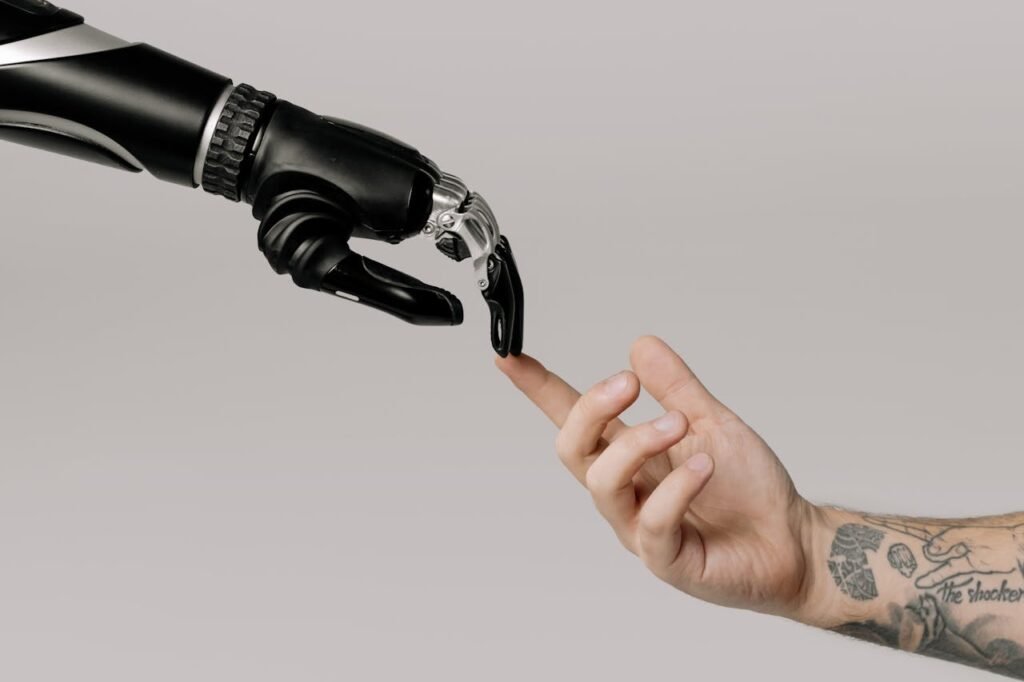
After limb loss, many people lose trust in their body. They wonder if they will ever move freely again. EMS helps restore this trust by showing that the muscles still respond, that progress is possible, and that the body is not “finished.”
Each contraction feels like proof of ability. This reassurance builds confidence, which makes users more willing to practice and prepare for their prosthetic.
Overcoming the Fear of Failure
Learning to use a prosthetic can be intimidating. The fear of making mistakes often holds users back. EMS helps reduce this fear by creating small, consistent wins before the prosthetic is even worn.
By the time the Grippy Hand is fitted, the user has already built a record of progress. This gives them courage to approach prosthetic training with optimism rather than hesitation.
Building Hope and Independence
Ultimately, EMS is not just about muscle training. It is about hope. Each session is a reminder that independence is within reach. For someone preparing for a Grippy Hand, EMS provides not only physical readiness but also emotional readiness.
With stronger muscles and greater confidence, users step into their prosthetic journey with a sense of control. They are not just waiting for change—they are actively creating it.
Long-Term Benefits of EMS for Grippy Users
Preventing Muscle Weakness Over Time
Even after someone starts using the Grippy Hand, EMS continues to play an important role. Without regular activity, muscles can weaken over time. Weak muscles send weaker signals, which can reduce the prosthetic’s responsiveness. EMS prevents this decline by keeping muscles strong and active.
This means that even years after receiving Grippy, the user can maintain consistent signal quality. Their prosthetic continues to work smoothly, and they avoid the frustration of fading control.
Supporting Comfort and Socket Fit
One challenge many prosthetic users face is changes in the residual limb over time. When muscles shrink, the shape of the limb changes, which can make the socket fit less comfortably. A poor fit leads to pressure points, pain, and reduced prosthetic use.
EMS helps preserve muscle bulk, which keeps the limb’s shape more stable. This supports a better socket fit and reduces the need for frequent adjustments. With comfort maintained, users are more likely to wear their Grippy daily, leading to better independence.
Improving Daily Endurance
Living with a prosthetic is not about isolated movements—it is about being able to use it comfortably through an entire day. Fatigue is a common barrier. EMS helps build endurance in the muscles that control Grippy, making them stronger and more resistant to tiredness.
This endurance translates into longer wear time, less strain during tasks, and a smoother flow of daily life. Instead of feeling worn out by evening, users still have the strength to engage in family, work, and social activities.
Reducing Secondary Strain
When the muscles of the residual limb are weak, the body often compensates by using other muscles, such as those in the shoulder or back. Over time, this leads to strain, discomfort, or even injury. By keeping the right muscles strong, EMS reduces the need for overcompensation.
This protects overall body health and ensures that prosthetic use feels natural rather than forced.
Advanced Integration of EMS with the Grippy Hand
Pairing EMS with Grippy Training
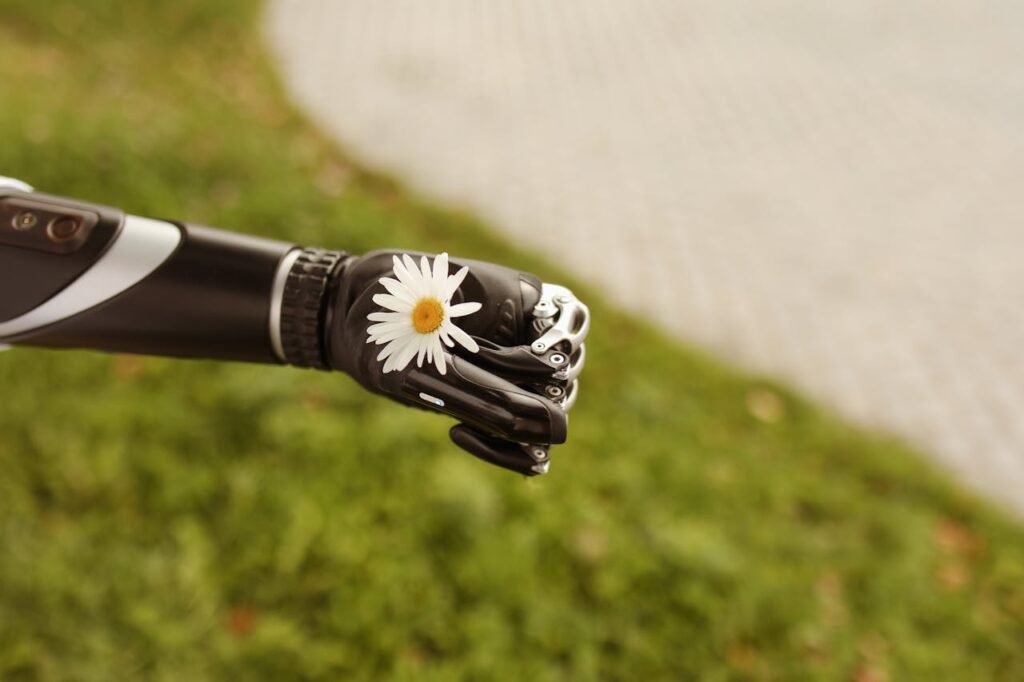
The most effective rehabilitation comes when EMS is used alongside real prosthetic practice. For example, during training sessions, EMS can activate the forearm muscles at the same time the user attempts to open or close Grippy. This pairing strengthens both the muscle and the brain’s recognition of the action.
Over time, this integration speeds up learning. The user no longer needs to consciously think through every movement—the prosthetic begins to respond more automatically, like a natural hand.
Using EMS for Grip Refinement
The Grippy Hand offers multiple grip options, from holding a spoon to grasping a bottle. These actions require both power and precision. EMS can be customized to stimulate different muscle groups for specific grips.
For example, a program can focus on sustained contractions for holding heavier objects or quick pulses for tasks requiring fast movement. This targeted approach helps users unlock the full versatility of their prosthetic.
The Future of EMS-Prosthetic Integration
Looking forward, EMS and prosthetics like Grippy may become even more connected. Research is already exploring systems where EMS responds directly to the user’s attempts to move, delivering stimulation in real time.
Imagine a system where, as soon as you think about gripping, EMS strengthens the muscle signal, making the prosthetic respond instantly. This kind of integration could make prosthetics feel almost seamless—where technology and biology move as one.
How Clinics Can Position EMS as Part of Holistic Care
Offering EMS as Pre-Prosthetic Preparation
Clinics can highlight EMS as an important step before prosthetic fitting. Instead of waiting passively, patients actively prepare their muscles. This approach leads to faster progress once Grippy is fitted, improving satisfaction and outcomes.
By marketing EMS as a proactive step, clinics also empower patients with a sense of control. They see that they can influence their own recovery, which builds motivation and trust in the clinic’s guidance.
Creating Specialized EMS Programs
Not every patient has the same needs. Some may need more focus on grip strength, while others may struggle with endurance or socket comfort. Clinics can create specialized EMS programs tailored to these needs.
These structured programs not only improve patient results but also set the clinic apart as a leader in advanced rehabilitation. Patients value care that feels personal and innovative, and EMS helps clinics deliver exactly that.
Building Long-Term Patient Relationships
EMS is not just for the beginning of prosthetic use. Many patients continue to benefit from it years after fitting. Clinics can offer follow-up EMS programs, device rentals, or regular check-ins.
This creates long-term relationships with patients, ensuring they always have support. It also helps clinics build a reputation for ongoing care, not just one-time service.
The Business Case for EMS in Grippy Preparation
Positioning EMS as an Essential Add-On
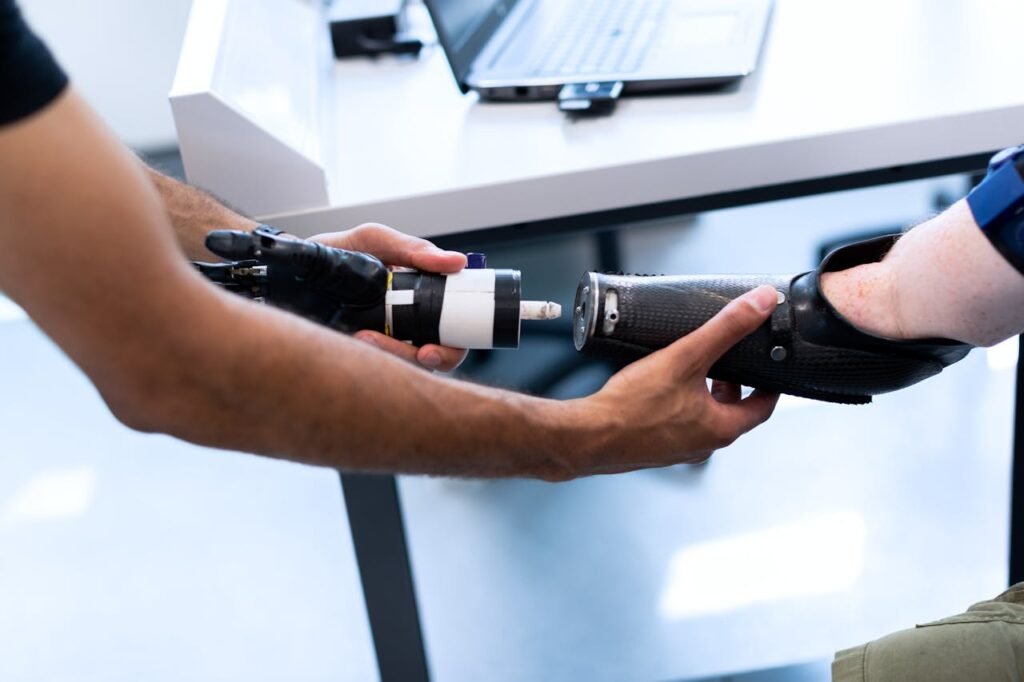
For clinics and prosthetic centers, EMS should not be presented as an optional extra. Instead, it can be positioned as an essential part of preparing for the Grippy Hand. Patients often feel nervous about whether they will adapt to their prosthetic quickly enough. By offering EMS as part of the preparation process, clinics provide reassurance that their patients are starting with the strongest foundation possible.
Businesses can frame EMS as the bridge between surgery and prosthetic use. Instead of waiting passively for the prosthetic fitting, patients actively engage in meaningful preparation. This keeps them motivated and shortens the time it takes to master the Grippy Hand once fitted.
Creating Tiered Care Packages
A practical way to integrate EMS into a clinic’s services is by designing tiered packages. For example:
- A basic package may include EMS sessions as part of the initial pre-prosthetic training.
- An advanced package could combine EMS with targeted functional exercises focused on grip, pinch, and endurance.
- A premium package may extend EMS support into long-term follow-up, with regular progress tracking and home device access.
By offering these levels of care, clinics meet different patient needs and budgets while positioning themselves as leaders in comprehensive rehabilitation.
Building a Competitive Advantage
Many prosthetic providers focus only on fitting the device. Clinics that integrate EMS into their standard protocol stand out. They can market themselves as offering not just prosthetics but complete preparation programs.
This distinction matters. Families and patients want to know they are receiving the most advanced care available. By showcasing EMS as a scientifically proven, forward-looking therapy, businesses build credibility and attract more patients.
Using Data to Demonstrate Value
One challenge clinics often face is proving the effectiveness of rehabilitation programs. EMS provides measurable outcomes that can be tracked over time. Muscle strength, endurance, and signal clarity can all be monitored and presented to patients.
This data-driven approach benefits both the clinic and the patient. For patients, seeing their own progress builds confidence and motivation. For clinics, these metrics demonstrate success to funders, insurers, and potential partners. Clear data creates a powerful story about the impact of EMS on prosthetic outcomes.
Extending EMS into Home Use
Not every patient can visit the clinic frequently. By offering EMS devices that can be used at home, clinics extend their care beyond the four walls of the rehabilitation center. Patients appreciate the convenience, and businesses build long-term relationships through device rentals, sales, or structured home-care packages.
This continuity keeps patients engaged and ensures they do not lose progress between appointments. It also creates a recurring revenue stream for clinics while improving patient satisfaction.
Training Staff to Deliver EMS Programs
For EMS to become a core part of prosthetic care, clinics need skilled staff who understand how to apply it effectively. Investing in training ensures that therapists can tailor EMS programs to individual needs—whether it’s preparing muscles for the first fitting, improving socket comfort, or building grip endurance.
By developing in-house expertise, businesses strengthen their reputation and reduce dependency on external trainers. This creates a sustainable model where EMS is seamlessly integrated into everyday practice.
Marketing EMS as Innovation
Innovation is a powerful marketing tool. Patients want to know they are receiving the best possible care, and families want to see that modern technology is being used to support recovery. Clinics that highlight EMS in their marketing—through workshops, patient success stories, or educational content—position themselves as innovators.
Sharing how EMS accelerates Grippy preparation, improves comfort, and builds confidence makes the clinic’s services more attractive. Businesses that communicate this clearly will stand out in an increasingly competitive healthcare landscape.
Building Partnerships with Prosthetic Manufacturers
Another opportunity lies in collaboration. Clinics can partner directly with prosthetic manufacturers like Robobionics to create integrated care pathways that combine EMS training with Grippy fittings. Such partnerships allow for co-branded programs, joint workshops, and coordinated patient support.
For businesses, these partnerships expand reach and credibility. For patients, they create a seamless journey where every step—from preparation to fitting to long-term care—feels connected and supportive.
EMS as a Lifelong Companion for Grippy Users
Turning Preparation into Progress
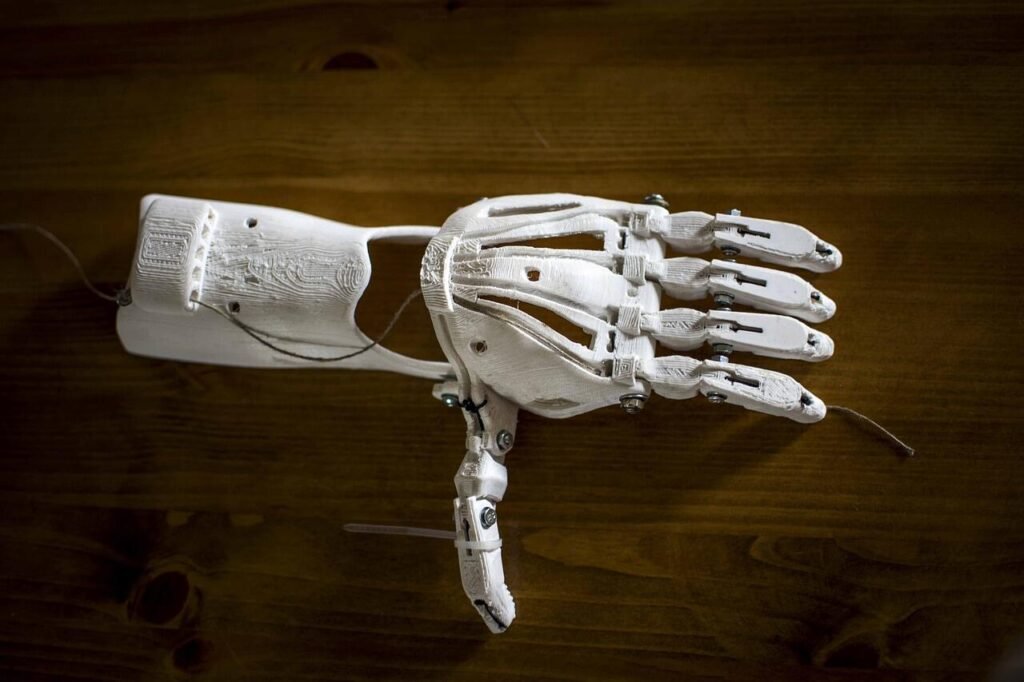
EMS is not just about getting ready for the Grippy Hand—it is about continuing progress long after the first fitting. By keeping muscles active, signals strong, and the brain engaged, EMS makes sure the prosthetic feels natural and dependable every day. It transforms rehabilitation from a temporary stage into a lifelong practice that keeps independence alive.
Beyond Physical Training
The true value of EMS goes beyond muscle strength. It builds confidence, reduces frustration, and restores belief in the body’s ability to adapt. For many users, each EMS session is a reminder that they are not limited by loss—they are empowered by possibility. This emotional strength is just as important as physical readiness in making the most of Grippy.
A Tool for the Future
As prosthetic technology evolves, EMS will play an even greater role in making devices smarter and more intuitive. With real-time integration and personalized stimulation, EMS will ensure that prosthetics like Grippy work seamlessly with the body. For users, this means more control, more comfort, and more freedom to live life on their terms.
Conclusion: Preparing for Grippy with Confidence
Getting ready for a Grippy Hand is not only about wearing the prosthetic—it is about preparing the body and mind to succeed with it. EMS makes this preparation possible. It strengthens the muscles, preserves comfort, refines control, and builds endurance. Just as importantly, it restores confidence and independence.
For new users, EMS turns the waiting period before fitting into a time of real progress. For long-term users, it ensures their prosthetic remains comfortable and responsive. For clinics, it offers a powerful tool to deliver better outcomes and deeper patient trust.
At Robobionics, we believe in giving people not just prosthetics but a complete pathway to independence. The Grippy Hand, combined with EMS, is a step toward a future where advanced technology and the human body work in harmony.
If you or someone you know is preparing for a Grippy Hand, we invite you to take the next step and explore how EMS can make the journey smoother and more rewarding.
Book a free demo with our team today:
https://www.robobionics.in/bookdemo
Your body is ready to move forward. With EMS and Grippy, the future is in your hands.



